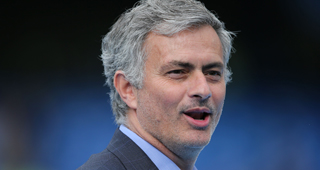A clunky portmanteau is a hell of a way to get around saying “we screwed up and it was very expensive.” Paul Pogba has been recovered by Manchester United for something in the neighborhood of $115 million. He is #Pogback, as United’s apparently bored press team is putting it. Gonzalo Higuaίn cost Juventus $104 million. John Stones, who was Everton’s third center-back by last season’s end, has joined City for $62 million plus add-ons.
But there are a few jarring outliers every summer. David Luiz did, after all, move to Paris Saint-Germain for $65 million in 2014. It’s the overall rise in transfer fees that’s new this year. A promising young defender like Eric Bailly goes for $35 million. Kevin Gameiro, a 29-year-old striker who was a regular starter at Sevilla for a single season, costs the same. Joe Allen, who plays at a remarkably Joe Allen-like level, is apparently worth $17 million. The bargain buy hasn’t gone extinct, but anyone with a name and even a scant track record in a big league has a price north of eight digits. Sporting directors at cash-strapped clubs must be sending their scouts to a lot of rustic small-town French and Portuguese stadia these days.
Every few years, we have to recalibrate our idea of what a club should spend on a given player. We’ve been doing this in some sense for as long as we’ve been following the sport, but inflation has hastened steadily in this era of nouveau riche clubs and league bureaucracies finally getting their acts together in terms of selling their game, not just to Liverpool and Valencia, but to New York and Beijing. In much the same way American sports franchises are living extravagantly due to a bubble (publicly financed stadiums, out-of-whack cable fees, etc.), European clubs are spending like a new continent’s worth of fans are going to start following soccer every half-decade. There has to be a ceiling for these fees and contracts, but the giddy cowboy-capitalist types who own clubs never seem to think about ceilings until the moment after they crash their skulls against one. They are, remember, the reason Financial Fair Play guidelines exist.
The effect of this profligacy is absurd amateur accounting: people who like to watch athletes kick a ball around thinking really hard about titanic amounts of money and whether a specific titanic amount of money is more or less proportionate to their abstract idea of how good a player is. This is a broadly futile exercise with regard to any sport, but it’s especially guesswork-heavy in soccer, where half the players a club signs come from a league its fans don’t watch, from a team that might play quite differently than the team they’re joining. For example, EPL followers don’t yet truly understand Nolito’s languid awesomeness, but La Liga aficionados can’t know how he’ll fare in a faster, more physical league, playing for Pep Guardiola, whose tactical vision is cubist. So post-transfer Nolito has Schrodinger’s cat status until the season starts. Is he worth $20 million? Probably. Maybe. Could be. It’s fun to think about for five minutes, then it gets exhausting.
All that changes year-over-year about these valuation debates we have with ourselves and each other is the prices, which are counted in several currencies but are effectively imaginary units. $20 million is real when it’s used to build an elementary school. When it’s splashed on a left winger, it’s barely actual. Most aspects of the transfer season are barely actual, including the transfers themselves, which shoddy European sports dailies occasionally make up out of whole cloth of a slow news day. We hem and haw over those, too, and the fabricated numbers floated therein. This is, all of it, a waste of time, which isn’t to say it’s condemnable, though it is a smidgen over-serious and it’s not a little gross that we spend our lunch breaks quantifying the value of labor.
More than anything, transfer season is a portrait of the starving sports fan. We enjoy the games so much that we have decided, in the sleepy summer months, to become fascinated with game-adjacent activity that resembles stock trading more than it does any sport. But we have turned it into a game nonetheless, by sheer force of treating it like one. This club wins the transfer window, this one flunks it. Nothing’s really happened yet, but man, do we ever have opinions about it.
There are questions as to whether anyone is particularly fond of this phenomenon—the rumor-hawking, the contract detail-scrutinizing, the price-judging—and there are ugly dimensions to it, but it comes from a pure, legitimate interest in athletic spectacle. And this is not something we do only with sports: most things that make us happy can also make us sick, and living is trying to find joy without lapsing into nausea. Transfer season always ends the same way: the games start, everyone feels a bit sheepish, and we forget the imaginary units that previously seemed so important. Real Madrid edged Sevilla in the European Supercup on Tuesday. United beat Leicester in the Community Shield last Sunday. Honest-to-god soccer is nearly upon us. It’ll rescue us from this weird, bored offseason time-killing exercise soon enough.



